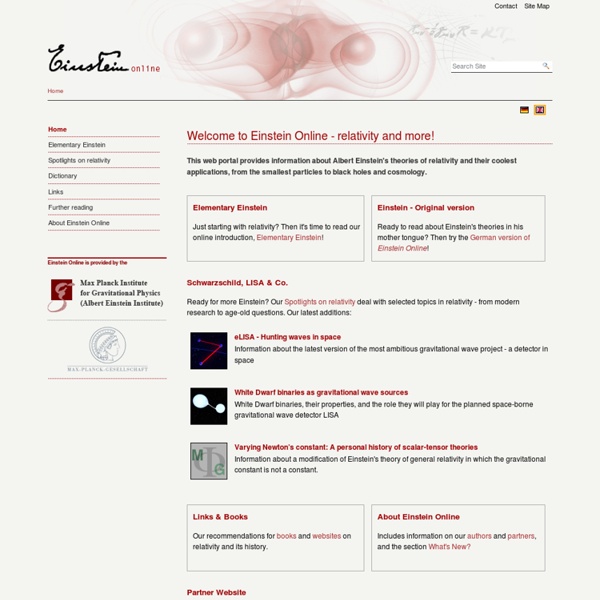



Practical Physics This website is for teachers of physics in schools and colleges. It is a collection of experiments that demonstrate a wide range of physical concepts and processes. Some of the experiments can be used as starting-points for investigations or for enhancement activities. Many have links to carefully selected further reading and all include information and guidance for technicians. Physics is a practical science. Practical activities are not just motivational and fun: they can also sharpen students’ powers of observation, stimulate questions, and help develop new understanding and vocabulary. Good quality, appropriate physics experiments and investigations are the key to enhanced learning, and clarification and consolidation of theory. We have published a new set of resources to support the teaching of practical science for Key Stages 3-5.
Science&Tech Libros : Mecatronica, Robotica, Electronica, Electricidad y mas [HF] Mi Biblioteca Digital, Mecatronica,Robotica,Electronica y + Soy Arkanosant, y en esta ocacion les informo que en este post voy a colocar todos, y cuando digo todos, son los mas de 20 GB en libros, mas de 500 libros que he recolectado a lo largo de la carrera, y que me gustaria compartir. Debido a la cantidad, solo colocare los datos mas relevantes de cada libro, y para mas detalles e informacion, estoy dejando mi propia base de datos de todos los libros que hasta ahora llevo ordenados, y que se ira actualizando. En libra podran observar la informacion mas detallada de cada libro, ademas de gestionar sus propios contenidos. Descarga LIBRA 0.92 Organizador de libros Por la cantidad, ire subiendo los libros y los ire posteando en esta misma entrada, la cual esta organizada de manera Alfabetica, iniciando con el titulo del libro, la edicion y los autores. Si tienen alguna peticion, dejen un comentario... Contraseña :Arkanosant_Co.A Administracion Exitosa de Proyectos, 1° ED.
Principle of relativity In physics, the principle of relativity is the requirement that the equations describing the laws of physics have the same form in all admissible frames of reference. For example, in the framework of special relativity the Maxwell equations have the same form in all inertial frames of reference. In the framework of general relativity the Maxwell equations or the Einstein field equations have the same form in arbitrary frames of reference. Several principles of relativity have been successfully applied throughout science, whether implicitly (as in Newtonian mechanics) or explicitly (as in Albert Einstein's special relativity and general relativity). History of relativity[edit] Basic relativity principles[edit] Certain principles of relativity have been widely assumed in most scientific disciplines. Any principle of relativity prescribes a symmetry in natural law: that is, the laws must look the same to one observer as they do to another. Special principle of relativity[edit] See also[edit]
Journal of Cosmology "Invitation" to publish does not guarantee acceptance. All articles are peer reviewed. Approximately 30% of invited articles have been rejected. Approximately 50% of invited articles have been rejected then revised and then resubmitted following peer review, and then accepted. Approximately 20% of invited articles have been accepted without suggested revisions following peer review. Approximately 80% of all articles submitted without invitation, have been rejected. Peer Review The Journal of Cosmology welcomes great ideas. Authors should submit the names, affiliations, and email addresses of 5 scientists qualified to review their paper. All papers are reviewed anonymously by at least two referees who are experts in the field in question. If reviewers suggest publication pending revision, authors will be invited to revise and resubmit the manuscript and to address and respond to criticisms and suggestions by the referees. Papers rejected by both referees cannot be revised and resubmitted. 1).
High School Physics and AP Physics Online Science Daily: News & Articles in Science, Health, Environment & Technology Base del CSIC - CINDOC URBADOC es un servidor de información especializado en arquitectura, urbanismo y ordenación del territorio, compuesto por cinco base de datos en línea con un fondo documental de más de 700.000 referencias bibliográficas, reunidas por un conjunto de productores europeos con el fin de potenciar el intercambio internacional y la difusión de información en los temas mencionados. Las bases de datos que contiene URBADOC son las que a continuación se enumeran acompañadas de las instituciones responsables: Urbaterr (Centro de Información y Documentación Científica-CSIC, España) URBATERR es una base de datos con más de 100.000 referencias bibliográficas de documentos (artículos de revista, monografías, informes y textos legislativos) publicados en España sobre urbanismo, ordenación del territorio, geografía, medio ambiente, arquitectura, construcción e ingeniería civil. Se puede acceder a los textos completos de los documentos que esten de libre acceso en Internet.
Theory of relativity The theory of relativity, or simply relativity in physics, usually encompasses two theories by Albert Einstein: special relativity and general relativity.[1] Concepts introduced by the theories of relativity include: Measurements of various quantities are relative to the velocities of observers. In particular, space contracts and time dilates.Spacetime: space and time should be considered together and in relation to each other.The speed of light is nonetheless invariant, the same for all observers. The term "theory of relativity" was based on the expression "relative theory" (German: Relativtheorie) used in 1906 by Max Planck, who emphasized how the theory uses the principle of relativity. In the discussion section of the same paper Alfred Bucherer used for the first time the expression "theory of relativity" (German: Relativitätstheorie).[2][3] Scope[edit] The theory of relativity transformed theoretical physics and astronomy during the 20th century. Two-theory view[edit] History[edit]
Wilkinson Microwave Anisotropy Probe (WMAP)